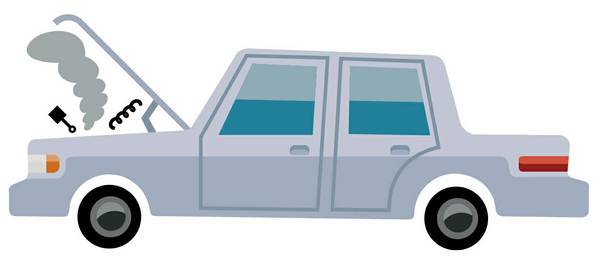A flat tire. An empty gas tank. A blown gasket — and no roadside emergency kit. Studies show that most of us could be better prepared for roadside emergencies.
While two-thirds of drivers carry junk in their trunk — food wrappers, toys, shopping bags and the like — only about half of drivers keep such emergency supplies as a flashlight or jumper cables in their vehicle.
Are you prepared?
Men are more likely than women to be prepared for roadside emergencies:
• Carry jumper cables: Men 64%, Women 53%
• Have a flashlight: Men 62%, Women 48%
• Have a first-aid kit: Men 47%, Women 40%
• Regularly check vehicle's emergency supplies: Men 81%, Women 53%
“Even on a relatively short trip, you can find yourself stranded for several hours,” said John Nepomuceno, an auto safety research administrator at State Farm. “It’s important to be prepared.”
Proper emergency equipment can help you get back on the road quickly and safely.
Common-sense guidelines
In addition to carrying an emergency kit and knowing how to use it, the following can protect you and your family on the road.
• Try to move your car off the road before taking emergency measures.
• Do not stand near the edge of the street or highway while checking your vehicle.
• At night, turn on your flashers to signal that you need help.
• In the daylight, raise the hood.
• Set out flares if you have them.
• If you have to repair your vehicle at night, wear a fluorescent safety vest.
• While waiting for help to arrive, stay inside the vehicle with the windows up and the doors locked.
• Do not accept a ride from passing drivers.
Trunk essentials
• Hazard triangle with reflectors, or road flares
• First-aid kit
• Jumper cables
• Windshield scraper and brush
• Spare tire
• Blankets and extra warm clothing
• Fluorescent safety vest
• Cellphone and charger
• High-calorie, nonperishable food
• Water
• Road salt or cat litter to help with tire traction
• Brightly colored distress sign or a “Help” or “Call Police” flag
• Candle, matches, lighter
• Flashlight
• Tarp
As important as having the proper gear is making sure it is in working order. That means regularly checking your supplies — at least twice a year — and switching out food as it expires.
“The only thing worse than getting a flat tire is finding out that your spare is also flat,” Nepomuceno said.
Also, be sure you know how to use the equipment. Become familiar with the items in a calm and familiar setting, because simply having them in your possession may not be enough to help you in an emergency.
Sources: State Farm, dmv.org


Join the Discussion:
Check this out for a full explanation of our conversion to the LiveFyre commenting system and instructions on how to sign up for an account.
Full comments policy